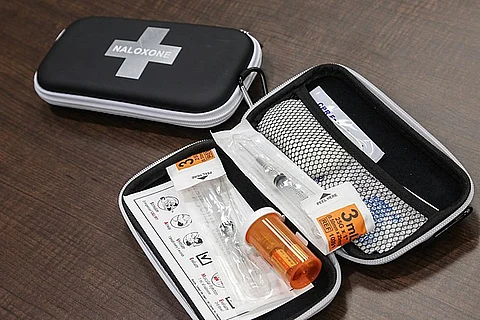By rapidly reversing the effects of an opioid overdose, naloxone saves lives ― if it’s available at the right time. To eliminate this element of chance, researchers are exploring ways to have the medication available in the body before it’s needed. In a proof-of-concept in ACS’ Nano Letters, a team has designed injectable nanoparticles that released naloxone when triggered by blue light. In experiments with mice, this system was activated a month after injection.
Since it began more than two decades ago, the opioid epidemic has taken an enormous toll on people’s lives. In 2022 alone, the U.S. Centers for Disease Control estimates that approximately 80,000 people died of overdoses involving opioids. This class of drugs, which includes both naturally derived and synthetic compounds, binds to specific receptors in the brain, suppressing breathing when taken in large quantities. Naloxone blocks the effects of opioids by binding to the same receptors. Currently, the medication is delivered as an injection or a nasal spray that needs to be taken as soon as possible after an overdose. Building on research into ways to control the timing of medication delivery, Daniel Kohane and colleagues sought to develop a nanoparticle-based system that healthcare providers could inject under the skin of someone with opioid use disorder to deliver naloxone, should that person require the medication.


